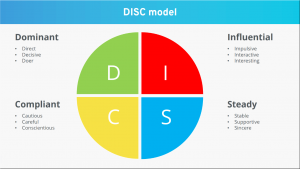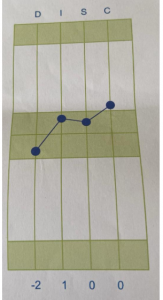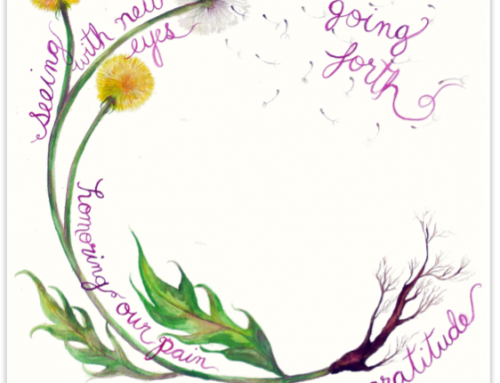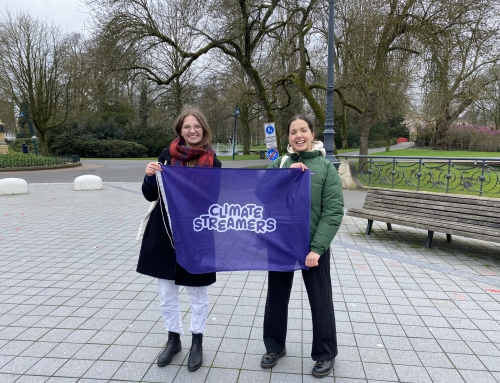As you know by now, I have started working at the company I did my graduation assignment for.
LEF Recruitment and LEF Green are recruitment agencies and one of their methods to make
matches is making use of the DISC analysis. It means a candidate fills in a test for about 6 to 8
minutes, choosing words that fit them the best. Based on these answers, a profile is sketched. It
reflects the working method and competencies of that person. It is incredibly useful in order to
truly understand a person and their way of working, moreover, it also tells whether a specific
function would fit that person. LEF’s team received training about this method in order to
understand this process and at the same time use it for teamwork. In this blog, I will explain
more about the method, my opinion and experiences with it and how it has helped me.
Firstly, I should explain the method itself. DISC stands for four profiles: dominance, influence,
steadiness and compliance. According to this method, everybody always fits various profiles.
However, some profiles more dominant than others. For instance, someone can have a CIS
profile, meaning the person mostly fits compliance, then influence and steadiness. This doesn’t
mean that person doesn’t have any Dominance competencies, those are just less present.
You might be wondering, what do all these profiles
mean?
Take a look at the model, it shows a superficial
image of the method. The competencies
connected to the profile are illustrated in each
corner. Since everyone has at least two profiles,
some competencies can rule each other out. For
example, according to my ‘influence’ profile, I can
be very social but my ‘compliance’ profile says I am
afraid of eye contact. This method shows you what
your working style is like and who you are as a
professional. Automatically, you can recognize
yourself in various profiles. Still, I didn’t expect this
method to describe my professional profile in such
a detailed way, in some way it was confronting. I
will explain more about my experience in the
following paragraphs.
.
Remember the CIS profile I was talking about? That’s me! This means, I am a very process-
oriented person, who appreciates clear rules, guidelines and facts. I take the time to make decisions because I first want to hear everyone’s opinions and perspectives. Nevertheless, because I am so driven, I am capable of finding solutions to complex problems. I am reliable, I
am great at listening, I am optimistic, I am able to convince others with my knowledge and I ask
how- and why questions. Other words that describe my professional profile are: communicative, methodical, perfectionist and systematic.
People that know me will recognize me in this description, moreover, my new colleagues who I
have been working with for only three weeks even recognized me. It is astonishing how well
people can recognize personality traits and competencies in such a short period of time.

This specific analysis shows which profiles fit you as a
professional. The profiles that suit you are the dots above the
green line in the middle. This means that ‘D’ is not part of my
profile. Furthermore, the highest dot is your most dominant
profile, in my case, the C. As you can see, the dots are very close
to one another. This means I am still a bit uncertain of my
function and role within the company. This is very logical since I
did the DISC test in my very first work week. You will notice that
someone who has had a function for over two years, has dots
that are scattered over the analysis. This means they are more
certain of their function and capabilities. Furthermore, people in
their twenties are still in development and getting to know
themselves. This means a person who is a bit older and/or has
been in their role for a longer time, has a more outspoken
profile. Another fact that also applies to me is that people with a
high ‘I’ normally fulfil creative functions. I have always had a
creative mind, whether I used it for brainstorming or being
crafty.
During the training, we did not only focus on who we are but also paid attention to what we can
learn from one another. Our team has such a big diversity, we all have different perspectives and
working methods which can help us develop ourselves. For example, we took a look at three
different questions: what do I want to develop, what do I need and what should I ask others? I
have set the learning goal to be less criticizing of others, I tend to be very critical of myself and I
think that’s why I also reflect this on others. I need to set time boundaries for myself because I
often lose track of time while working. Doing so can help me finish more projects and
assignments. Lastly, I need to ask people to stimulate me to give my opinion. I enjoy listening to
others and learning from them, which leads to me being (too) silent and sometimes even feeling
like I haven’t given my (valuable) input.
I showed some personal points I would like to improve. These points were offered by the training
and because I recognised the habits, I choose to create goals around them. In my opinion, this is
one of the strengths of the method. People can learn about themselves and get a clear image of
what works for them and what doesn’t. However, a risk of this method is that people can use it
to judge others based on their profile. ‘Oh you’re a D so you probably don’t listen to others’ or
‘you are an S, you never go with the flow’.
That is why I ask you to use the method in order to get a better understanding of yourself and
the ones around you. I have learned it can help you find strengths in your flaws, as a result, I feel
so much more at peace. It might be confronting at first, to read such a detailed description of
your own working behaviour. But it will give you clarity on what you need and it gives you and
your colleagues the chance to improve teamwork as well.





